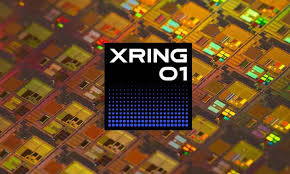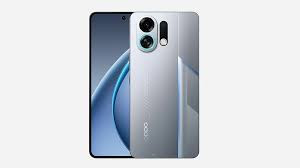Xiaomi Unveils XRING O1: A New Contender in the Flagship Chipset Arena

IIE DIGITAL DESK : The move towards semiconductor self-reliance, Xiaomi has launched its first in-house flagship chipset, the XRING O1. This debut positions Xiaomi alongside industry giants like Qualcomm and MediaTek, marking a pivotal step in the company's evolution from a smartphone manufacturer to a comprehensive tech innovator.
The XRING O1 is built on TSMC's advanced second-generation 3nm N3E process, housing approximately 19 billion transistors within a 114.7 mm² die area. Its deca-core CPU configuration includes two high-performance Arm Cortex-X925 cores clocked at 3.9GHz, four Cortex-A725 cores at 3.4GHz, two Cortex-A725 cores at 1.9GHz, and two Cortex-A520 efficiency cores at 1.8GHz. Complementing the CPU is a 16-core Arm Immortalis-G925 GPU, designed to deliver robust graphics performance. Additionally, the chipset features a 6-core NPU capable of 44 TOPS, enhancing AI processing capabilities.
Benchmark tests reveal that the XRING O1 achieves a single-core score of 3,119 and a multi-core score of 9,673 on Geekbench 6, placing it in close competition with Qualcomm's Snapdragon 8 Elite. In GPU performance, it attains an OpenCL score of 21,789 and a Vulkan score of 22,600, indicating strong graphics processing capabilities.
The XRING O1 powers Xiaomi's newly launched 15S Pro smartphone and the Pad 7 Ultra tablet. The 15S Pro features a 6.73-inch 2K OLED display, a triple 50MP rear camera setup, a 32MP front camera, and a substantial 6,100mAh battery. The Pad 7 Ultra boasts a 14-inch OLED screen and a 12,000mAh battery, catering to users seeking high-performance tablets.
Xiaomi's investment in developing the XRING O1 aligns with China's broader initiative for semiconductor independence amid global supply chain challenges. The company has committed approximately $7 billion over the next decade to advance its chip design capabilities. While Xiaomi continues to collaborate with established chipmakers like Qualcomm and MediaTek, the XRING O1 represents a strategic move towards reducing reliance on external suppliers and enhancing vertical integration.
The introduction of the XRING O1 signifies Xiaomi's entry into the high-performance chipset market, challenging established players and showcasing its technological advancements. As the company continues to integrate its own chipsets into flagship devices, it sets the stage for increased innovation and competitiveness in the global tech landscape.
You might also like!















